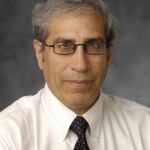

Every week until the election, we will have a question for the DJUSD School Board Candidates. We have a word limit of roughly 350.
Please also see the Vanguard Candidate’s forum from Sunday, September 18.
Question 4: For the most part the classroom of today could be plopped into a classroom of 100 years ago. How can we build the classroom of tomorrow – discuss how to incorporate technology and innovative learning like STEM in your answer?
 Susan Lovenburg
Susan Lovenburg
While we’ve made significant investment in instructional technology and infrastructure to expand education beyond the four walls of a classroom, there is much more to do. As a result of the district’s strategic planning and resources provided by the state, we now have wireless internet connectivity at all school campuses, laptops and Chromebooks available to all classrooms, and an infrastructure of technology assistance and professional development opportunities to support instruction.
That said, we also have many science labs and career technical education facilities throughout the district that are woefully lacking in adequate space and state of the art equipment. Just imagine what more could be accomplished if we provide teachers with the tools they need to support vibrant instruction and students with exciting learning environments that replicate the real world workplace. Dare to dream!
The district’s surplus properties are one source of potential funding for facilities. Just as we sold the Grande property and immediately reinvested the proceeds in building an All Student Center on the Davis High campus – an innovative learning space in and of itself – the School Board needs to look at the opportunities available through the sale of the Wildhorse surplus property and redevelopment of the 5th and B Street site. With successful passage of Measure H, we’ll be able to turn our attention to these needs.
Programmatically, school gardens and the 6th grade outdoor education program would benefit from sustained district funding, we should be expanding robotics and computer coding opportunities to all our campuses, and I support introducing a choral music program in elementary schools to enhance early STEAM instruction. All these bring immense benefit and equitable learning opportunities for all students. For that reason, I was an advocate for including them in the school parcel tax. Given that the Board opted to go with a measure that funds only current programs, we will need to seek other ongoing funding sources to expand these opportunities.

Bob Poppenga
I would encourage readers to view the YouTube video (https://www.youtube.com/watch?v=JvK7xuZLtok&feature=youtu.be) posted as a comment to Question 3 last week. Whether one agrees with all of the points made or not, it is thought provoking. In my view there are several elements that come together to best define how classrooms will look and function in the future: 1) a need to meet the individual learning needs of all students and to provide them with the skills required for a 21st century workforce, 2) the rapid pace of technological change, 3) the evolution of teaching, 4) the physical school space, and 5) our global interconnectedness.
- There is no single way to learn and everyone learns at a different pace. Within reason, students will be grouped more on mastery of skills than on age. Rigid bell schedules will become more flexible. Teachers will use a variety of formats (e.g., lectures, laboratories, collaborative problem-based learning, hand’s on and real-world learning experiences) to provide critical thinking and problem-solving skills. Real time student assessment tools will help teachers individualize instruction more effectively. Given the importance of computer science to global competitiveness, coding curricula will become common at an early age.
- It is difficult to keep up with technology, but the classroom of tomorrow will not only need to be digitally connected, but will also need state-of-the-art science and career training laboratories. Remote learning facilitated by technology (e.g., videoconferencing) will be more common. Public-private partnerships will be crucial to ensure that adequate resources are available.
- Teachers will lecture less and spend more time in the role of a guide or coach. Teachers will work closely with local institutions of higher education and/or private businesses to stay current and to provide real-world experiences for students. Strong professional development programs for teachers will be essential.
- The physical layout of schools will move away from single classrooms to more open and collaborative learning spaces. School or community “makerspaces” (physical environments that offer tools and hands-on learning and creative opportunities) will be available. Standard classroom desks and chairs will be replaced by a variety of more comfortable and collaborative options.
- Due to our global interconnectedness and global challenges, the classroom of the future will need to focus on preparing students to have an appreciation for cultural differences and globally significant issues. Many future jobs will be with companies which are international in scope and employ a diverse workforce. To be successful, students will need to appreciate and consider multiple perspectives and be able to work in multidisciplinary teams.
Finally, we need to ensure that students from low SES backgrounds are not disadvantaged due to less access to digital and technology driven learning tools.

Jose Granda
This question relates directly to the theme of my campaign. I would like to implement the 3 T’s Teaching, Technology, and Taxpayers into the thinking of making Davis schools the most technologically advanced in their teaching mission while at the same time being financially responsible to the taxpayers.
Nowadays most students have smart phones, ipads and other electronic devices that for many can be a source of distraction if you start looking at videos and messages and do Facebook, etc. The same tool can be transformed into a learning tool. They are great note taking devices, they also can take pictures of the board and allow the review of a lesson and of everything the teacher said. They can even record lectures and be great note taking tools. The communication between teacher and students via YouTube videos is another technology that can switch around the way we teach. An example of a topic can be easily transformed into a short video that students can play from home or on their smart phones as many times as they want. Just like having the teacher in your hands.
In classroom the use of clickers is another technology that helps engage students and get instant opinions and results immediately. Students discuss a topic, and they along with the teacher can work up answers to questions to practice a topic or to prepare for an exam. Technology and software exists to make grading easier and automatic. I am sure teachers will appreciate it. More and more in the future students will be turning homework online and grading can be done that way too.
There are many emerging tools for teaching and learning that with a little bit of will and leadership can be implemented at a cost that is not significantly higher than teaching a normal classroom. However in order to do this we have to invest in teacher development and training to make teachers motivated to use new technologies and feel comfortable teaching with them. In this way, PTA’s can play an important supportive role. I believe Davis parents have a receptive attitude about this. Now is up to the leaders on the School Board to embrace the idea of teaching with technology as I see it is the bright future of education.
Alan did not send a response?
He apologized, said he got slammed on multiple fronts
alan is going to lose
Why? He’s everybody’s second choice.
because I’d hint he wants it like the others
Hope not, his sign is on my front yard
I’d like to see us think less about how to incorporate technology in the classroom and more about how to develop the kind of thinkers that can excel in STEM fields. The two things do not necessarily go hand-in-hand; plenty of people use technology without having any aptitude for creating it. We need to teach science as a process, we need to teach students how to communicate science, and we need to teach students how to reflect on the role of their work in society as a whole.
Excellent comment Roberta. I agree.
Technology should be a tool in the service of education. It’s not the education itself.
Roberta, agree with this and if kids learn nothing more than they can figure things out if they want to then they are educated.